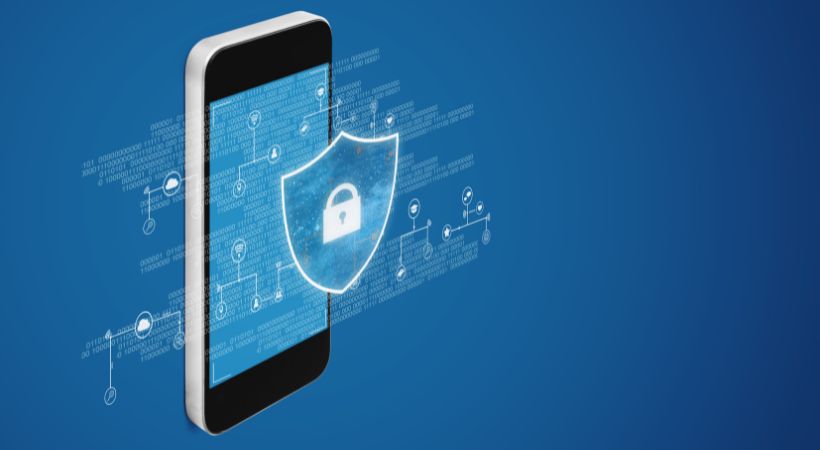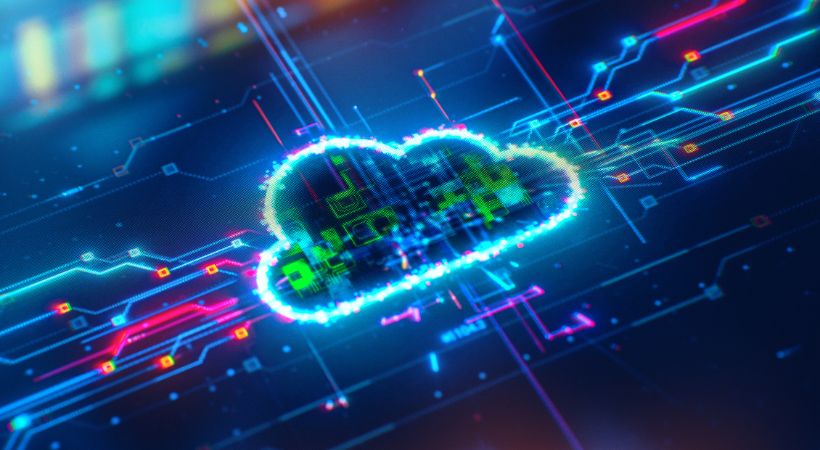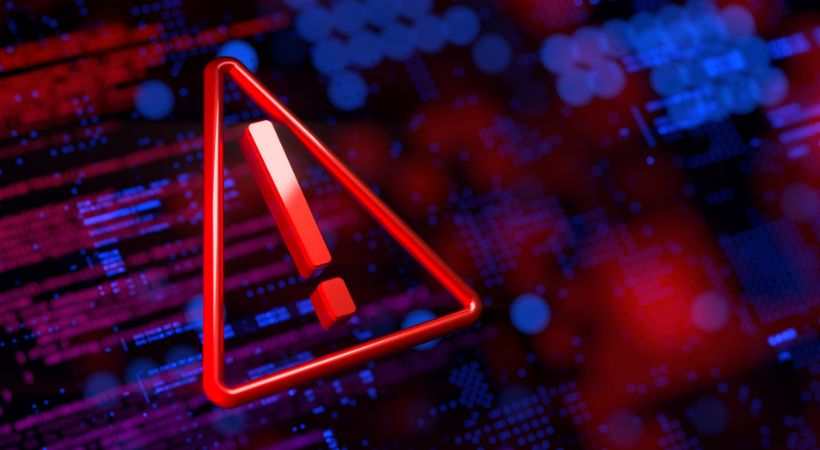Introduction
As 2023 comes to an end, let’s look back on how the landscape of cybersecurity has evolved faster than ever before with the cybersecurity trends that reshaped the way we protect our digital assets and data. As we navigate through a year marked by technological advancements and emerging threats, it’s crucial to stay ahead of the curve in understanding and implementing innovative defense strategies.
From the complex interplay of generative AI in security to the ever-growing importance of mobile device protection, this article provides a comprehensive overview of what’s new and what’s next in the realm of cybersecurity. Whether you’re a tech enthusiast, a cybersecurity professional, or just someone keen on keeping their digital life secure, these insights will equip you with the knowledge to face the challenges of this dynamic and ever-changing field.
Join us as we explore the pivotal trends of 2023, dissecting each one to understand its impact and implications. Get ready to discover how these trends not just shaped the cybersecurity industry this past year but also influenced the way businesses, governments, and individuals approached digital security.
1. Generative AI Risks

The risks associated with generative AI in 2023 were multifaceted, impacting various aspects of cybersecurity. This advanced technology, while offering significant potential for innovation, also poses unique challenges. One of the primary concerns is data privacy, as generative AI systems, trained on vast data sets, could potentially compromise user privacy. Additionally, the technology’s ability to create realistic content has led to fears about its use in sophisticated phishing attacks and the spread of disinformation through convincing deepfakes.
Generative AI has also democratized the creation of malware, enabling even those with limited technical know-how to produce malicious software. This could lead to a surge in malware production, outpacing current defense mechanisms. Furthermore, the rapid integration of generative AI into various tools introduces new vulnerabilities, potentially leading to security breaches.
The rise of generative AI underscores the need for updated security policies and regulations to address these emerging risks. It also emphasizes the importance of understanding the ethical and legal implications of AI in cybersecurity, particularly in terms of accountability and liability in the event of AI-driven security breaches. This evolving landscape demands a proactive approach to ensure that the advancements in AI are harnessed responsibly and securely.
2. Security Awareness Training
In 2023, Security Awareness Training evolved to focus on changing employee behavior in the face of sophisticated cyber threats, going beyond mere awareness. This training is now an ongoing process, constantly updated to keep pace with the evolving threat landscape. It involves interactive methods like simulations and workshops, providing hands-on experience in identifying and responding to cyberattacks, such as phishing and social engineering.
A key component of this training is fostering a culture of security within organizations. Employees are encouraged to report suspicious activities in a ‘reporting without consequence’ environment, contributing to early detection of threats. The training is inclusive, catering to various technical proficiencies across the organization.
The use of technology and data analytics in training is also emphasized. By analyzing attack patterns, training can be tailored to address the most relevant threats, enhancing the effectiveness of the training programs. Overall, Security Awareness Training in 2023 is about embedding a proactive security mindset among employees, making them an integral part of the organization’s cybersecurity defense.
3. Mobile Device Security

For years, mobile device security has been becoming increasingly vital due to the extensive use of these devices in personal and professional settings. With mobile devices often being a gateway to sensitive data, they have become prime targets for cyberattacks. So, more than ever before, in 2023 we saw a focus on comprehensive security strategies that went beyond antivirus software to include regular updates, secure passwords, and data encryption.
The rise of Bring Your Own Device (BYOD) policies in workplaces adds to the complexity, as personal devices used for work purposes can introduce security vulnerabilities. Ensuring these devices are secure involves robust policies and employee education.
Moreover, the integration of mobile devices with other technologies, like IoT and cloud services, expands the potential attack surface. Addressing this requires a blend of technology, policy, and user education to protect not just the devices but also the networks they connect to.
Mobile Device Management (MDM) and Mobile Application Management (MAM) systems have become important for controlling and managing the security of these devices. They allow for actions like remotely wiping data on lost or stolen devices and enforcing security policies.
4. API Security
API (Application Programming Interface) security has become increasingly critical due to the widespread use of APIs in modern digital ecosystems. APIs, which enable different software applications to communicate and share data, have become a primary target for cyberattacks. This is largely because they often handle sensitive data and are exposed to the internet, making them vulnerable to unauthorized access and breaches.
The challenges in securing APIs stem from the rapid pace of digital transformation, often resulting in APIs being developed and deployed quickly, sometimes without thorough security testing. This can leave them exposed to various vulnerabilities. Moreover, the task of monitoring and managing a multitude of APIs, each with different security requirements, adds to the complexity.
Securing APIs involves implementing robust authentication and authorization measures, encrypting data, and conducting regular security audits and vulnerability assessments. The adoption of API gateways and management platforms has also been important, providing centralized control over API traffic and facilitating the implementation of security policies.
Overall, the focus on API security in 2023 reflects the need for a comprehensive and dynamic approach to cybersecurity, recognizing APIs as crucial components in the interconnected landscape of modern software applications.
5. Blurred Lines Between Cloud and Cybersecurity

The distinction between cloud security and traditional cybersecurity increasingly blurred in 2023 due to the pervasive adoption of cloud computing in business operations. This shift has expanded the cybersecurity landscape, as data and applications now reside both within traditional network perimeters and across various cloud platforms. This distribution of data complicates security efforts, as it requires protecting information beyond the controlled, on-premise environment.
The integration of cloud computing necessitates a comprehensive approach to cybersecurity, one that encompasses both on-premise systems and cloud-based resources. This includes managing security across different environments, such as hybrid models that combine on-premise and cloud solutions. The unique challenges of cloud security involve securing data in transit and at rest, controlling user access, ensuring compliance with data privacy laws, and protecting against cloud-specific threats.
Moreover, the shared responsibility model in cloud computing, where the security of the cloud infrastructure is managed by service providers and clients are responsible for their data, highlights the need for a clear understanding of security roles. Modern cybersecurity strategies are thus evolving to include cloud-native tools and practices, focusing on continuous monitoring, real-time threat detection, and specialized policies and training for cloud security. This convergence represents a significant shift in the security paradigm, emphasizing the need for integrated and agile security strategies for modern digital enterprises.
6. Ransomware Threats

In 2023, ransomware threats continued to pose a significant risk to organizations of all sizes. Ransomware, a type of malware that encrypts a victim’s files and demands payment for their release, has evolved to become more sophisticated and damaging. These attacks not only lock away critical data but also threaten to release or sell it if the ransom is not paid, adding an extra layer of coercion. The impact of ransomware extends beyond financial loss, affecting business continuity, customer trust, and an organization’s reputation.
Ransomware attacks are often the result of phishing scams, exploitation of security vulnerabilities, or targeted attacks on specific organizations. The rise in remote and hybrid work environments has also expanded the attack surface, making it easier for cybercriminals to exploit network vulnerabilities. The complexity and prevalence of these attacks necessitate a comprehensive cybersecurity approach, incorporating robust backup and recovery processes, employee training to recognize potential threats, and a proactive stance on network security.
The threat of ransomware underscores the importance of a holistic cybersecurity strategy that integrates various elements, from endpoint protection to network security and user education. In the face of these threats, organizations must prioritize building cyber resilience to mitigate the impact of attacks and ensure rapid recovery in case of a breach.
7. SaaS and API Solutions
To no one’s surprise, Software as a Service (SaaS) and API (Application Programming Interface) solutions continued to become central to modern business operations in 2023. SaaS, delivering software over the internet on a subscription basis, offers businesses scalability, accessibility, and cost efficiency. It eliminates the need for extensive hardware and enables users to access applications remotely. The growth of SaaS has led to an increased focus on SaaS security, particularly in monitoring the security posture of these applications.
APIs, on the other hand, are the building blocks that allow different software applications to communicate and share data. They enable the integration of various services, playing a crucial role in the functionality of digital ecosystems. As APIs are exposed to the internet, they have become a primary target for cyber attacks, prompting a greater emphasis on API security. This involves securing the data that APIs handle and ensuring they are protected against unauthorized access and breaches.
The convergence of SaaS and API solutions highlights the interconnectivity of modern software and the need for comprehensive security strategies. This involves not only protecting the software itself but also ensuring the secure integration and interaction of different services. The focus is on creating a seamless yet secure user experience, ensuring data integrity and protection in an increasingly interconnected digital environment.
8. IoT Security Focus

In 2023, the focus on Internet of Things (IoT) security intensified due to the massive proliferation of IoT devices in both personal and professional spheres. IoT devices, which include everything from smart home appliances to industrial sensors, are interconnected and often collect and transmit sensitive data. This interconnectivity, while offering efficiency and innovation, also presents significant security vulnerabilities.
IoT security is challenging due to the diverse range and sheer volume of devices, many of which lack standardized security protocols. These devices can be easy targets for cyber attacks, potentially leading to unauthorized access to broader network systems. The risk is heightened by the fact that many IoT devices are continuously connected to the internet, creating more entry points for attackers.
Securing IoT devices involves ensuring firmware and software are regularly updated to patch vulnerabilities. It also requires robust encryption of data transmissions and stringent authentication processes to control access. Additionally, there’s an emphasis on designing IoT devices with security in mind from the outset, rather than treating security as an afterthought.
The focus on IoT security is not just about protecting individual devices but is also crucial for safeguarding the larger networks they connect to. With the increasing reliance on IoT technologies in critical sectors like healthcare, transportation, and energy, the importance of IoT security in maintaining the integrity and reliability of these systems cannot be overstated. This need has driven both industry and government stakeholders to prioritize enhancing IoT security measures and standards.
9. Protecting Critical Infrastructure
Protecting critical infrastructure has become a top priority, driven by the increasing frequency and sophistication of cyberattacks. Critical infrastructure, encompassing sectors like healthcare, energy, transportation, and government services, is essential for the functioning of society and the economy. Cyberattacks on these sectors can have far-reaching consequences, from disrupting essential services to causing national security threats.
The focus on protecting critical infrastructure involves a multifaceted approach. It includes implementing advanced cybersecurity measures to safeguard systems and networks against various forms of cyber threats. These measures are not just technical; they also encompass strategies for risk management and recovery planning to ensure resilience in the face of an attack.
Government and industry collaboration plays a crucial role in this endeavor. Sharing information about threats and best practices helps in developing a more robust and unified defense strategy. Additionally, there’s an emphasis on regulatory frameworks and compliance standards that mandate specific security measures for critical infrastructure providers.
With the growing interconnectedness of digital systems and the rising sophistication of cyber threats, the importance of securing critical infrastructure cannot be overstated. It’s a collective effort that requires coordination and cooperation across different sectors and national borders to ensure the safety and continuity of essential services.
10. Government and Industry Collaboration
In 2023, the collaboration between governments and industries in the realm of cybersecurity became increasingly crucial. This partnership was driven by the need to effectively combat the complex and evolving landscape of cyber threats that affect both national security and private sector interests.
The collaboration involves sharing intelligence about emerging threats, tactics, and vulnerabilities. Governments often possess extensive information on cyber threats, including those posed by nation-states or large criminal organizations. By sharing this knowledge with the private sector, they can help companies better prepare and protect themselves against these threats. Conversely, industries often have insights into the latest technological advancements and best practices in cybersecurity, which can be invaluable to government agencies.
Joint efforts also include developing and implementing robust security standards and frameworks. These efforts aim to establish a baseline of security practices across critical sectors, ensuring a unified and effective approach to cyber defense. Additionally, this collaboration extends to incident response, where both sectors can pool resources and expertise to respond to and mitigate the impact of cyberattacks more effectively.
This government-industry collaboration is not just a matter of sharing information but also involves active cooperation in policy-making, research and development, and even joint training exercises. The goal is to create a more resilient and secure cyber ecosystem that can withstand and adapt to the rapidly changing threat environment, safeguarding both public and private interests.
Conclusion
As we look ahead, it’s clear that the journey of cybersecurity in 2023 was one of adaptation, collaboration, and vigilance. These trends highlight the dynamic and complex nature of cybersecurity that we faced in 2023, underscoring the need for proactive strategies and collaboration across sectors to mitigate risks and defend against emerging threats in 2024. The stakes are high, and the responsibility is shared among all stakeholders in the digital realm. By embracing these challenges and opportunities with a proactive and unified approach, we can fortify our defenses and navigate the digital future with confidence and security.

